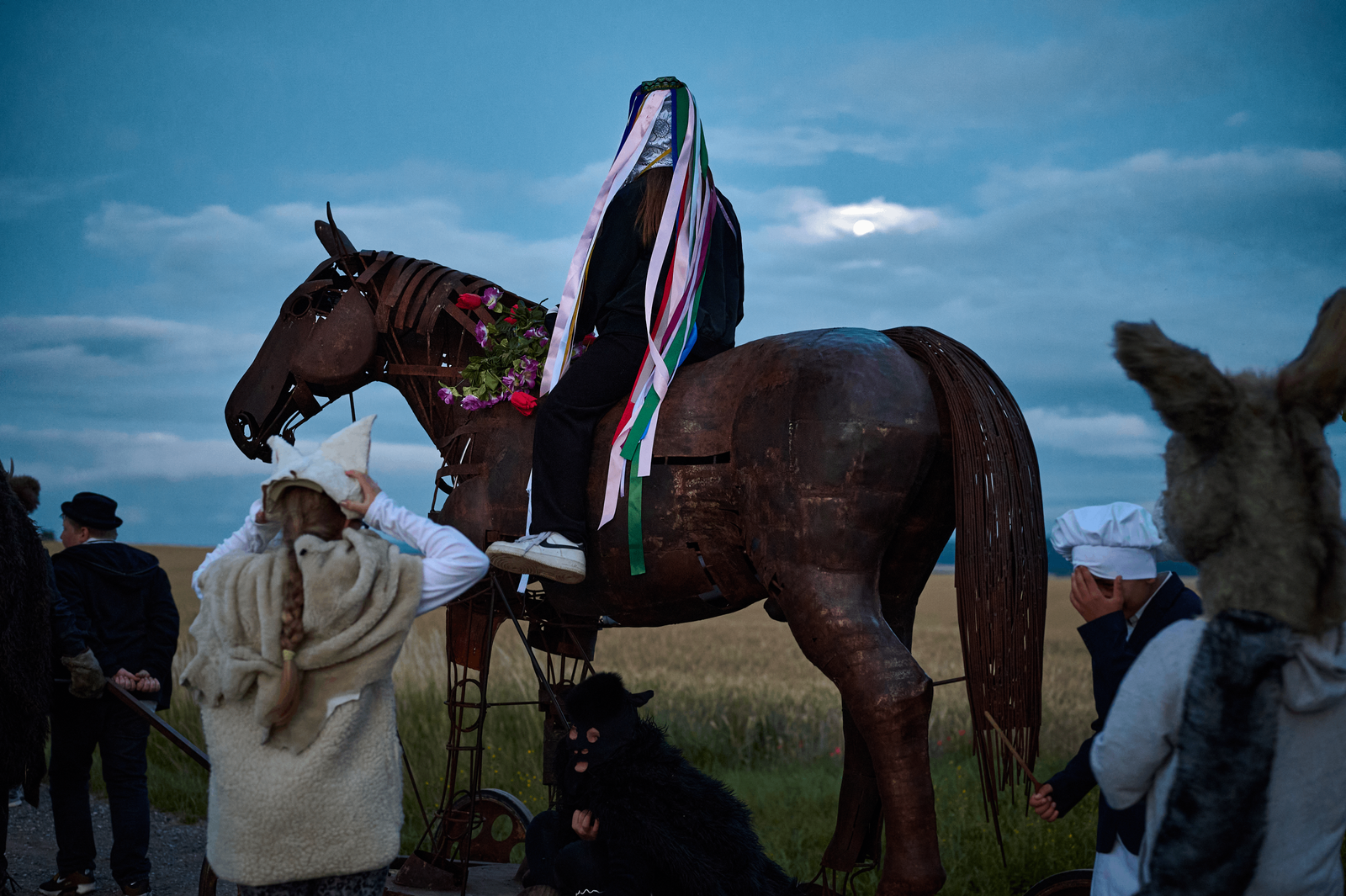Published
10 months agoon

‘The Night Is Dark and Colder Than the Day’ by Christina Friedrich is an artistically creative, poetic documentary that is equally a visual feast for the eyes.
It serves up a narrative that blurs the lines between reality and dreams while exploring the inner worlds of children as they share their fears and existential questions. This isn’t a film for entertainment or even for some specific educational or informative value. It rather feels like an invitation to step into a dreamscape stitched together by the voices of children navigating the complexities of emotions most adults are still trying to understand.
The film focuses on several kids as they talk about their vulnerabilities and fears of isolation, death, loss, and self-discovery. These are captured as the themes that emerge in their recurring dreams.
With its 83-minute runtime, the film takes viewers on a poetic journey into the minds of these kids as they speak candidly about struggles that, despite their tender ages, feel universally relatable.
One child shares a recurring dream where his father is furious at him and shatters him into a hundred pieces. Another expresses a wish to be a shapeshifter, hinting at a desire for control or escape from emotional constraints. There’s also a haunting recollection from a kid who dreams about his family being abducted by tiny, square, blue-looking aliens, only to escape and return home. This feels like they sharing genuine feelings of displacement or the fear of the unknown.
Beyond these fears, the children also reveal tender, simple truths that also feel universally relatable. “I don’t feel comfortable sharing a room with many others,” one admits, exposing the raw honesty that only children can articulate without filters. Another says, “I believe in love. I love my cats, and they love me too,” a statement that, despite its simplicity, resonates deeply. This seems to reveal, that Love, after all, is an emotion they not only feel but recognize when it’s reciprocated. “I know the feeling of being happy. And I like it when someone surprises me. Then I am happy,” another shares. This statement feels like a very obvious truth that we often do not notice. The kids are aware of the emotion of happiness and are equally deserving of it.
As an adult, I found many of these reflections profoundly relatable. Their fears are genuine and sincere and I realized I still carry some myself. Perhaps that’s what makes the film work. It raises a poignant question. Are these feelings tied to childhood, or are they simply part of the human experience?
Interestingly, the film doesn’t focus on any specific child. There are no names, no backstories, and no attempt to build a personal connection with any one of them. This approach creates a sense of universality but also a distance, making it feel more like an exploration of collective consciousness than individual narratives.
The sound design and score add an eerie, almost unsettling mystique to the film, reminiscent of something you’d expect from a psychological horror. The combination of atmospheric sounds and haunting music deepens the dreamlike quality, amplifying both the beauty and the discomfort of the children’s confessions.
Also, visually, the film blurs the line between reality and performance. It’s hard to tell if the kids are acting, but everything they say feels sincere. Their innocence amplifies the emotional weight of their words. There are dramatized scenes with children in costumes, embodying wolves, angels, and other symbols that reflect their fears and dreams. Despite the nonfictional nature of these inserts, they never feel forced. The sincerity of the children’s voices grounds them.
The final 30 minutes shift focus to older kids in their teens, whose challenges still feel relatable, though framed through a more introspective lens. There are also myriad shots that seem almost random, disconnected from the film’s central themes, yet somehow adding to its fragmented, dreamlike texture.
Clearly, this is not a film you can watch passively. It demands your attention and perhaps even multiple viewings to fully absorb its depth. The dialogue is entirely in German, fortunately, there are subtitles for non-German speakers. But if you give it your attention, you’ll begin to understand how the film seeks to reveal the ways our world is shaping the minds of the next generation.
Granted, this might not be a film for everyone. Its abstract style and lack of a traditional narrative structure could be challenging for some. But it’s undeniably a film made with intention, and perhaps its biggest challenge lies in ensuring that every viewer can connect with it on some level. If nothing else, it leaves you with a lingering sense of reflection about childhood, about fear, and about the fragile, beautiful complexity of simply being human.
I will score this documentary 3.5 out of 5 stars.
Second on my list of addictions is Movies.. the only thing I could possibly love more is my Dearest Waakye lol. Nothing else does a better job of reminding me that ANYTHING is possible with the right amount of effort. I have great eye for details and flaws in scripts. Shallow scripts bore me. I am an avid reader. Your everyday Mr Nice guy. Always the last to speak in a room full of smart people. Half Human, half Martian but full MOVIE FREAK.














